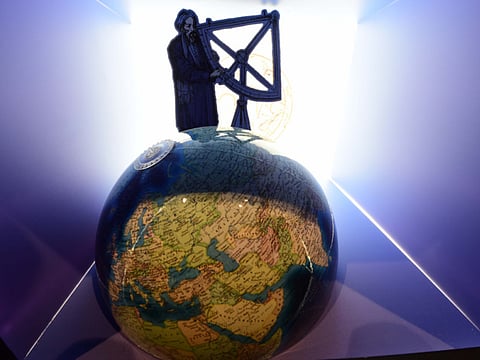Islamic contributions to physics featured in Nobel Museum
Dubai’s newly opened Nobel Museum showcases medieval Islamic scientists

Dubai: Contributions to physics by medieval Islamic scientists are showcased at the Nobel Museum which opened here on Monday.
Launched by the Mohammad Bin Rashid Al Maktoum Foundation (MBRF) in association with the Nobel Museum in Sweden, the museum in Children’s City features Arabic scientists from 780AD to 1585.
From Mohammad Ibn Mousa Al Khwarizmi’s work in algebra and invention of the quadrant, which is used to solve mathematical problems, to Abu Rayhan Al Biruni who devised a method to determine the radius of the earth, Islamic scientists are on display to visitors at the starting point of the exhibition.
The exhibition also features Abd Al Rahman Al Sufi who translated and improved on Greek astronomical works, Muhammad Ibn Al Hassan, the father of optics, and Taqi ad-Din Muhammad Ibn Ma’ruf Ash-Shami Al Asadi, chief astronomer of the Ottoman Empire.
“If you go back in time, the development, especially within the field of astrophysics, was really taking place in the Islamic world,” Dr Olov Amelin, director of the Nobel Museum in Sweden, told Gulf News at the opening ceremony on Monday.
He hoped the Nobel Museum would inspire young Arabs to contribute to future discoveries in physics.
Wassim Melki, design manager of the exhibition, described the showcase and its importance in the museum. “The Islamic timeline is older than Nobel, and they pioneered scientific research, medicine, physics, astronomy, observatories and the science of optics. We start with it as an introduction to say that the root of scientific research and development started in this region and it should come back here,” he said.
The Nobel Museum in Children’s City is open until March 5.
— Alison Xiao is an intern at Gulf News.
Sign up for the Daily Briefing
Get the latest news and updates straight to your inbox



